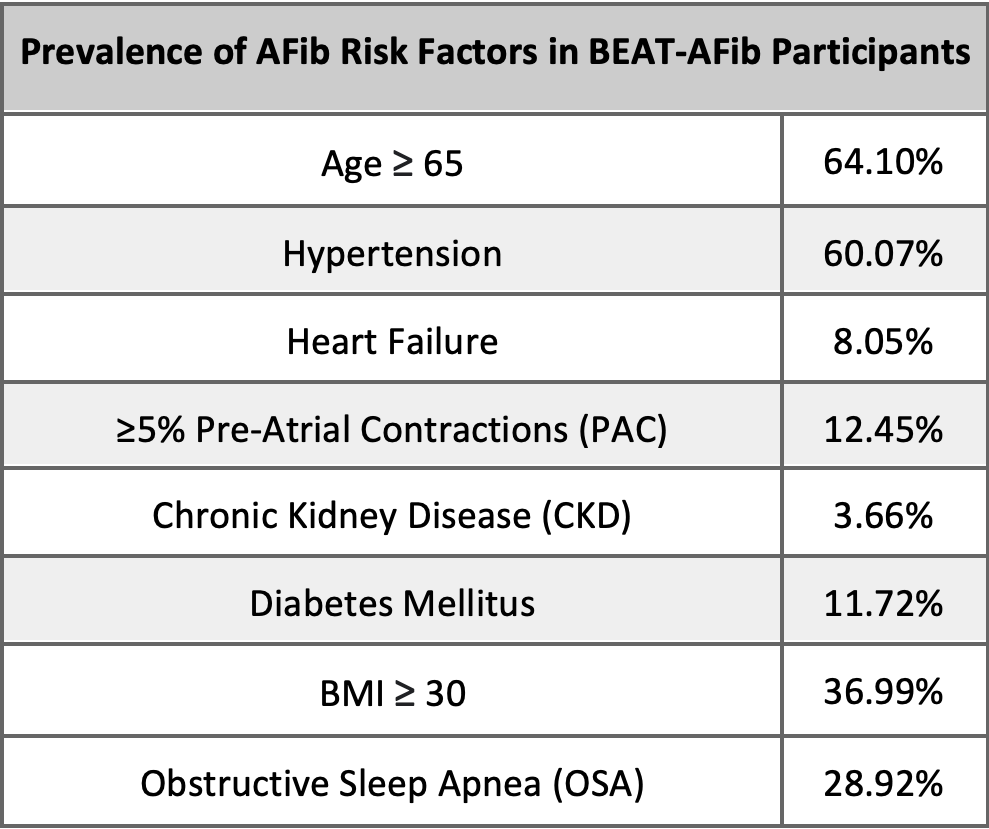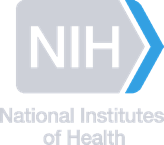
What We Aim to do in BEAT-AFib
Atrial Fibrillation (AFib or AF) is the most common heart arrhythmia seen in practice. However, we do not currently have a good way of identifying patients who are most at risk for developing AFib, nor are we able to identify who might progress to having more frequent episodes in patients already diagnosed with AFib. While we have ways to treat AFib, we are still looking for strategies for preventing AFib from occurring in the first place. Therefore, in this novel study, we aim to fill in these gaps and identify the various factors that contribute to AFib development and progression. We are studying biomarkers—molecules in the blood that might be an indicator of risk. You can think of cholesterol as a biomarker for developing coronary disease, but we don’t currently have a “cholesterol” for AFib. We hope to change that.
We are also looking at other potential markers, other than those that might be found in the blood. For example, we are studying subtle structural changes of the heart via imaging (using echocardiography and MRI in some participants) that might predate the occurrence of AFib. We are also studying electrical abnormalities from ECGs using a new approach of recording high-resolution ECGs to pick up subtle signals not present on a standard ECG. We are also interested in how behaviors (e.g. sleep, exercise, and stress) might affect the risk as well. Together, we are contributing to a growing body of research that will help us better understand the development and progression of AFib.
Your Contribution
Since the BEAT-AFib study began in September 2020, we have enrolled 273 patients. Together, our research participants have helped us collect 19,069 Kardia AliveCor ECG recordings, 837 VivaLNK patch recordings (around 3,348 days of recording with each recording averaging 4 days in length), and 347 high-resolution ECGs (at baseline and follow-up visits). Since our last update in July, we have collected 3,585 Kardia AliveCor ECG recordings, 180 VivaLNK patch ECG data, and 36 high-resolution ECGs. We are still recruiting new participants to match our three groups (those with AFib, those with AFib risk factors, and controls).

Who are our Participants?
The average age of the BEAT-AFib study participants is 66 years, and 64% of participants are male. We hope to be able to use data to find new predictors of developing AFib or its more progressive forms. Looking at the distribution of common AFib risk factors among our non-AFib study population, 60% of our participants have a history of hypertension (high blood pressure), 64% of our population are age 65 or older, and 37% have a BMI over 30 kg/cm.
What are PACs?
Dr. Edward Gerstenfeld, Professor of Medicine and Chief of Cardiac Electrophysiology at UCSF, and the BEAT-AFib study team have been recruiting patients with a high burden of PACs to look into how PACs can lead to the development of AFib. But, what are PACs exactly?

AFib Research Update
Since our last newsletter several months ago, our colleagues at UCSF have published new papers on PACs and AFib. Click the button to check out what we’ve been up to!

What’s New in the BEAT-AFib Study?
In the past few months The BEAT-AFib study Team has updated some instructions regarding the VivaLNK patch. Click the button to check them out!

Traveling With Your Devices
Traveling this winter? Well, you can still contribute to BEAT-AFib! Click the button to read our winter tips for traveling with your devices.





